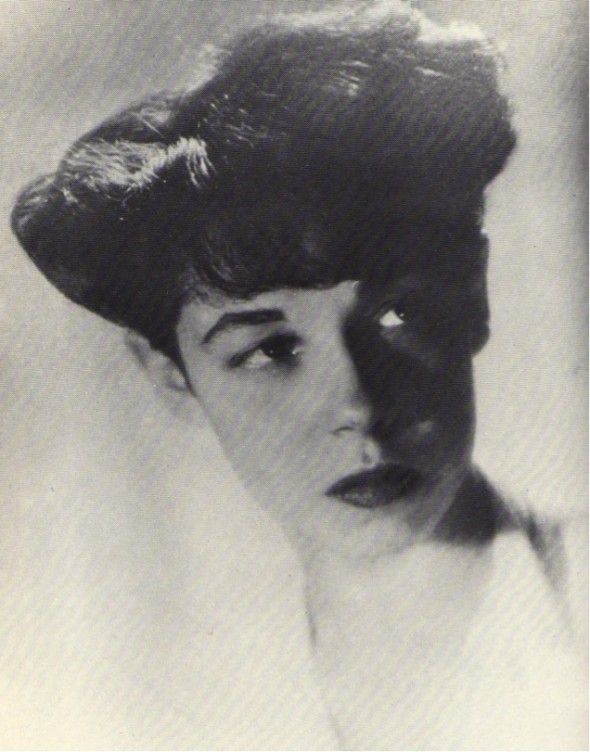Lady Jane

A profile of Jane Bowles.
Elizabeth Hardwick once wrote, “Writing is a fraught activity for anyone, of course, male or female, but women writers seem to have to take stronger measures, make more peculiar psychic arrangements, than men to activate their imaginations.” She might have especially been channelling Jane Bowles. Following the publication of Two Serious Ladies, Jane’s writing sputtered. When a play, In the Summer House, débuted in New York, in 1953, and closed only three weeks later, she was quoted in Vogue as saying, “There’s no point in writing a play for your five hundred goony friends.” No matter what encouragement she received from Paul and from others, she flailed. As if she were fulfilling the cliché that being well adjusted was somehow incompatible with an artistic temperament, every word she put to paper seemed to be torture. Jane, uncommonly dedicated to producing art that was unique, was her own harshest critic. Speaking about her process, Paul told Millicent Dillon that Jane couldn’t bring herself to “use the hammer and the nails that were there. She had to manufacture her own hammer and all the nails.” Somewhere along the way, her standards got in the way. So did booze. And so did Arabia.
“It was good for Paul, but not good for me,” Jane wrote of Tangier near the end of her life. Since having moved to Morocco, she had written a handful of short stories, a play, and many more unfinished sketches. With Paul’s midwifing, some of the material from Two Serious Ladies—for originally there were to be three serious ladies—was excised and reconfigured into the short stories ‘The Guatemalan Idyll’ and ‘A Day in the Open.’ In 1949, she published what might be her most magisterial short story, ‘Camp Cataract,’ a tale of grotesquely dysfunctional sisters gone awry, in which Sadie, an overbearing spinster, meets an eerie end while trying to rescue Harriet, who has a nervous condition (she “practice[s] imagination” every morning), from the summer camp that she visits each summer. But by the nineteen-sixties, Paul’s rising literary star had dramatically eclipsed his wife’s. His first novel, The Sheltering Sky, which he later said he was inspired to write after the experience of helping Jane edit her Ladies, was widely praised and thought to be a classic. (Some years later, it would be made into a film by Bernardo Bertolucci.) And yet, little attention has been paid to how Jane’s work and, perhaps, Two Serious Ladies in particular, set into motion a lifelong obsession and even an existential mode that came to mark not only Jane’s writing but also Paul’s for decades to come. Two Serious Ladies, published six years before The Sheltering Sky, appears to be cut from the same cloth. Both books take up travel and the situation of the foreigner in foreign lands. While Paul, in this work as well as in his short stories, captured how the East can break down men’s souls until they regress into a crazed primordial state, Jane saw in that same act of travel—uncomfortable, perilous, occasionally terrifying—her salvation. The Jane-like character in The Sheltering Sky, Kit, wanders deeper and deeper into the desert after her husband succumbs to typhoid, is repeatedly raped, and, finally, becomes the fourth wife and concubine of a Bedouin. Far from any trace of the civilized world and divested of reason, Kit goes completely mad.
Jane, too, eventually went mad. In 1957, at the age of forty, she suffered a massive stroke that left her vision impaired, making it painful to read or write. She depended wholly on Paul and assorted friends for care and supervision. The simplest decisions—what to wear, what to eat—would inspire hours of semi-theatrical vacillation. Although she was prohibited from mixing alcohol with her medicines, she very often drank herself into an incomprehensible stupor. A second stroke, frequent epileptic fits, and depression followed. When things got out of hand, Jane was treated in medical centers in the U.K., the United States, and Spain. By the end of her life, Jane, who had always been paranoid about money, was not only handing it out to American hippies and Moroccans in the bars of Tangier but also distributing her belongings to whoever would take them. Paul and others speculated that Cherifa might have cast a spell on her, a belief fuelled by the appearance of packets of pubic hair, finger nails, and menstrual blood that Cherifa had planted in the apartment that the two shared. In 1973, while staying at a Spanish convent in Malaga, Jane, who was never a practicing Jew, declared, as her childhood hero Simone Weil once did before her, that her last wish was to convert to Catholicism. She died not long after she was said to have danced “too wildly” at a birthday party for one of the other residents. She was fifty-six.
